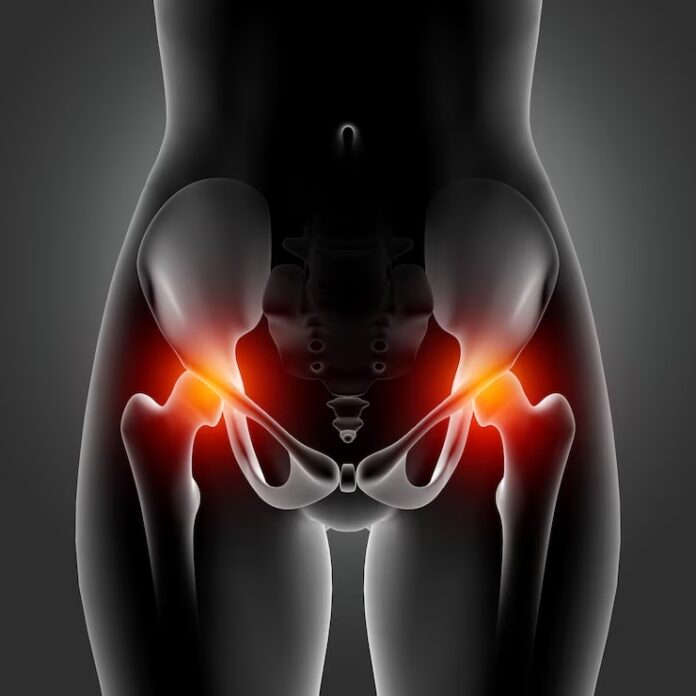Introduction
Pelvic phleboliths may not be a well-known medical term, but for those who have experienced them or healthcare professionals diagnosing and treating them, understanding this condition is crucial. Pelvic phleboliths are calcified blood vessels found in the pelvis, and while they are generally harmless, they can lead to discomfort and confusion. This comprehensive article will delve into pelvic phleboliths, exploring their causes, symptoms, diagnosis, and treatment options.
What Are Pelvic Phleboliths?
1.1 The Basics of Phleboliths
To understand pelvic phleboliths, we must first comprehend what phleboliths are. Phleboliths are small, round, calcified structures that form within veins. They are often composed of calcium and other minerals and can develop anywhere in the body’s venous system. However, they are called pelvic phleboliths when they start in the pelvis.
1.2 The Anatomy of the Pelvic Area
Before diving deeper into pelvic phleboliths, it’s essential to have a basic understanding of the pelvic anatomy. The pelvis is a complex structure consisting of bones, muscles, and various organs, and it plays a crucial role in supporting the body and housing reproductive and digestive systems.
What Causes Pelvic Phleboliths?
2.1 Vascular Calcifications
The formation of phleboliths, including pelvic phleboliths, is closely related to vascular calcifications. In this section, we will explore the factors contributing to the calcification of veins and how they lead to the development of phleboliths.
2.2 Are Pelvic Phleboliths Hereditary?
One common question is whether pelvic phleboliths can be hereditary. We will examine the potential genetic factors that may predispose individuals to develop these calcified structures in their pelvic veins.

Recognizing the Symptoms
3.1 Are Pelvic Phleboliths Always Symptomatic?
Many individuals with pelvic phleboliths may not experience any symptoms at all. However, for those who do, the symptoms can range from mild discomfort to more significant issues. This section will outline the various symptoms associated with pelvic phleboliths.
3.2 Differential Diagnosis: Pelvic Phleboliths vs. Kidney Stones
One of the challenges in diagnosing pelvic phleboliths is distinguishing them from kidney stones, which can present with similar symptoms. We will discuss the key differences and diagnostic methods to identify pelvic phleboliths accurately.
Diagnosing Pelvic Phleboliths
4.1 Imaging Techniques
The primary method for diagnosing pelvic phleboliths is through medical imaging. We will explore the different imaging techniques, such as X-rays and ultrasound, that can be used to detect and confirm the presence of pelvic phleboliths.
4.2 Medical History and Physical Examination
In addition to imaging, a thorough medical history and physical examination are essential in the diagnostic process. We will discuss the questions your healthcare provider may ask and the inquiries they may perform.
Treatment Options
5.1 Conservative Management
For asymptomatic or minimally symptomatic cases of pelvic phleboliths, conservative Management is often the recommended approach. This section will cover lifestyle modifications and strategies to alleviate discomfort without invasive interventions.
5.2 Interventional Procedures
In more severe cases where pelvic phleboliths cause significant pain or complications, interventional procedures may be necessary. We will explore these procedures, including phlebectomy and sclerotherapy, and their potential risks and benefits.
Living with Pelvic Phleboliths
6.1 Coping Strategies
Managing pelvic phleboliths can be a long-term journey. This section offers practical advice on how individuals can cope with the condition, including pain management techniques and emotional support.
Conclusion
Pelvic phleboliths may not be life-threatening, but they can significantly impact an individual’s quality of life. Understanding the causes, symptoms, diagnosis, and treatment options for pelvic phleboliths is crucial for patients and healthcare providers. With proper knowledge and care, individuals can effectively manage this condition and improve their overall well-being.
Frequently Asked Questions (FAQs)
In this section, we will address some common questions that people often have about pelvic phleboliths. Understanding these FAQs can provide valuable insights into this condition and its Management.
1: What are pelvic phleboliths?
Pelvic phleboliths are small, calcified structures that form within veins in the pelvic area. They are typically composed of calcium and other minerals and can be found in the veins of the pelvis.
2: Are pelvic phleboliths the same as kidney stones?
No, pelvic phleboliths are not the same as kidney stones. While they can cause similar symptoms, such as pain, they originate in different body parts. Pelvic phleboliths form within the veins of the pelvis, whereas kidney stones develop in the kidneys and can travel down the urinary tract.
3: What causes pelvic phleboliths to form?
The exact cause of pelvic phleboliths is not fully understood, but they are related to vascular calcifications. Age, genetics, and certain medical conditions may contribute to their development.
4: Are pelvic phleboliths hereditary?
Some evidence suggests that a genetic predisposition may play a role in the development of pelvic phleboliths. However, more research is needed to understand the genetic factors involved fully.
5: What are the symptoms of pelvic phleboliths?
Pelvic phleboliths can be asymptomatic, meaning some individuals may not experience symptoms. However, when symptoms do occur, they can include pelvic pain, discomfort, and, in rare cases, complications such as blood clots or vein inflammation.
6: How are pelvic phleboliths diagnosed?
Pelvic phleboliths are typically diagnosed through medical imaging, such as X-rays or ultrasound. A healthcare provider may also consider a patient’s medical history and perform a physical examination to aid in the diagnosis.
7: Can pelvic phleboliths be treated?
Treatment for pelvic phleboliths depends on the severity of the symptoms. In many cases, conservative Management, which includes pain management and lifestyle modifications, is sufficient. However, interventional procedures like phlebectomy or sclerotherapy may be recommended if severe symptoms or complications arise.
8: Are pelvic phleboliths a severe medical condition?
Pelvic phleboliths are generally not considered a severe medical condition. They are usually benign and do not pose a significant health threat. However, they can cause discomfort and pain, which may sometimes require medical attention.
9: Can pelvic phleboliths go away on their own?
Pelvic phleboliths do not typically disappear on their own. Once they form, they tend to persist unless treated or managed.
10: Is there any way to prevent pelvic phleboliths from forming?
There is no known way to prevent the formation of pelvic phleboliths, as their exact cause is not well understood. However, maintaining a healthy lifestyle and managing any underlying medical conditions may help reduce the risk of complications associated with pelvic phleboliths.
These FAQs provide valuable information about pelvic phleboliths, addressing common questions and concerns that individuals may have about this condition. If you suspect pelvic phleboliths or are experiencing symptoms, it is essential to consult a healthcare provider for proper diagnosis and guidance on Management.

